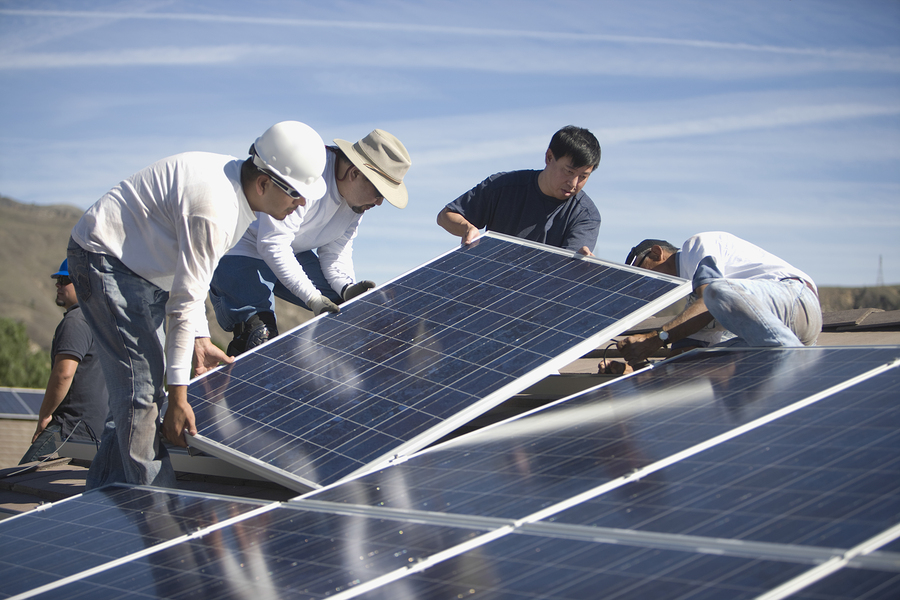Would you like to know all the interesting facts surrounding the solar panels operation? Throughout this article, we will present you with all the detailed information about the types of solar panels and all their operations.

Types of solar panels and operation.
Operation of solar panels
When we talk about solar panels, we refer to an element that is found within solar installations. Its main function is to take advantage of all solar energy, also known as solar modules. Likewise, there are solar panels dedicated to photovoltaic energy and also for thermal energy. So of these we can highlight:
- Solar collectors: these are for solar thermal energy installations. They raise the temperature of a fluid thanks to solar radiation.
- Photovoltaic Panels: for photovoltaic energy installations. This being a set of photovoltaic cells, with the main function of generating an electric current.
Photovoltaic panels
This type of panel is generally designed for the production of electricity and is used for photovoltaic installations. The panels are responsible for converting the sun's radiation into electrical energy thanks to the photovoltaic effects they present.
In general, this type of panel is made of silicon. This takes advantage of the energy of the photons that the light presents to be able to make the electrons jump out of the silicon.
The sum of all these electrons causes an electric current. These solar panels generate electricity in the form of direct current. They can go with current converters to obtain alternating current.
How do they work?
Photovoltaic panels work thanks to photovoltaic effects. When a photovoltaic cell receives sunlight, this causes electrons to jump. Therefore, the sum of all these electrons manages to generate an electric current, that is, electricity.
Used materials
In general, solar cells are composed of crystalline silicon or gallium arsenide. These are created especially for those uses. Likewise, silicon crystals are also produced for the activities of the microelectronics industry. According to the configuration of the silicon, the photovoltaic panels can be:
- Monocrystalline panels
- Polycrystalline solar panels. Polycrystalline silicon has a better conversion rate, but at a reduced cost.
- Solar panels give thin layers.
Solar panel construction techniques
A 6 cm silicon cell exposed to 1 AU direct light generates a current of 0,5 amps at 0,5 volts. Gallium arsenide is even more efficient than silicon, for this reason, solar panels can generate electricity for the most isolated places that have good solar lighting.
The crystal is cut into small discs. It is polished to eliminate any danger of cuts and dopants are inserted into the discs. Metallic drivers are deposited on each surface: a small connector within the surface that faces the sun and a connector on the other side of the sun.
How many photovoltaic cells does a solar panel have?
A solar panel is a set of all these photovoltaic cells, although each one provides very little amount of energy, a set of solar cells can generate enough energy to be most useful.
In order to receive more energy, the solar panels must be directed directly at the sun. Also, the most common configurations of solar cells are:
- 36-cell solar panels: This type of panel tends to be the most compact on the market; it links to 36 solar cells to obtain an output voltage of 12V.
- Solar panels of 60 cells with 24V voltage.
- And 72-cell solar panels. To obtain voltage greater than 24V.
If you liked the information in this article, we invite you to visit our website to learn more interesting information about electronics such as Grounding Know the importance of this great system! If you want to go deeper into this information, we leave you a video on the subject.